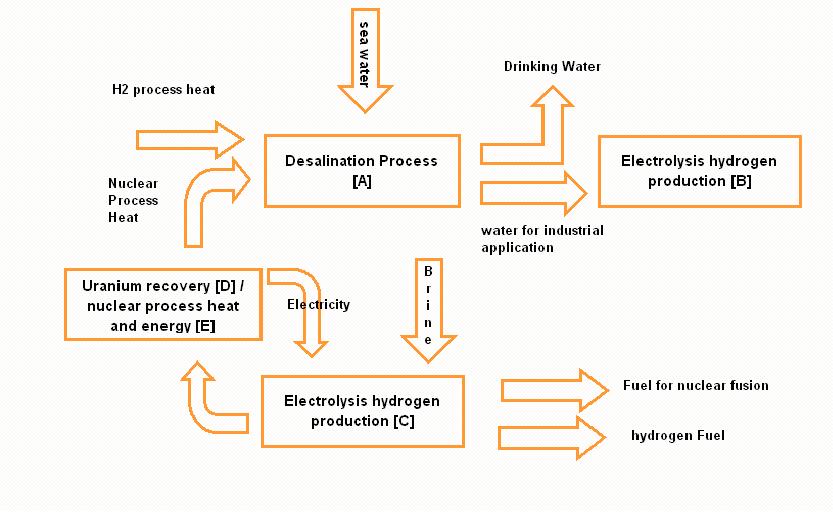316c The Sustainable Hydrogen Production Process
With the implementation of the Hydrogen Fuel Initiative, hydrogen as an alternate energy source has drawn much interests in mitigating global warming and climate change. This research provides a framework of a closed-end-cycle for the production of hydrogen as the primary product, and the process optimization based upon the markets factors. The criteria to be met for a closed-cycle energy source are as follows: (1) to produce the carbon free based energy source, (2) with abundant supply of feedstock, (3) self-sustainable with respect to the energy consumption to the process. There are two objectives for this closed-cycle framework in addition to meeting the criteria set forth above. The first is to produce hydrogen via sea water electrolysis. The by-products for this process are the precious metals such as gold, silver and uranium recovered from the sea. The uranium is of particular interest which will in turn provides energy source to start the cycle of sea water electrolysis using energy source from the existing or the next generation nuclear reactor technology. The second objective is to resolve the world supply of fresh water problem, which in our lifetime might result in world's regional conflict as the water supply dwindling as a result of world population growth, and the environmental impact of the global economic growth. Figure 1 depicts the flow diagram for the sustainable hydrogen production processes that include the desalination process [A], the electrolysis of the desalinated water [B], the electrolysis of the brine from the desalination unit [C], the recovery of Uranium to generate electricity for the electrolysis process [D], and the using of H2 and / or nuclear process heat for the desalination process [E]. Sea water is the primary feedstock to the process and hydrogen fuel is the primary product. The operation capacity for these processes will depend on the markets factors such as the demand in electricity, hydrogen fuel, fresh water and Uranium. Research supported by the Hydrogen Fuel Initiative will improve efficiency of the electrolysis process, and decrease in cost of the electrolyzer. The recent trend of the nuclear renaissance and the generation IV nuclear technology are expected to decrease electricity costs upon the complete development of the technology. Preliminary calculation shows that the integrated hydrogen production process meets the criteria for the sustainable energy source.
